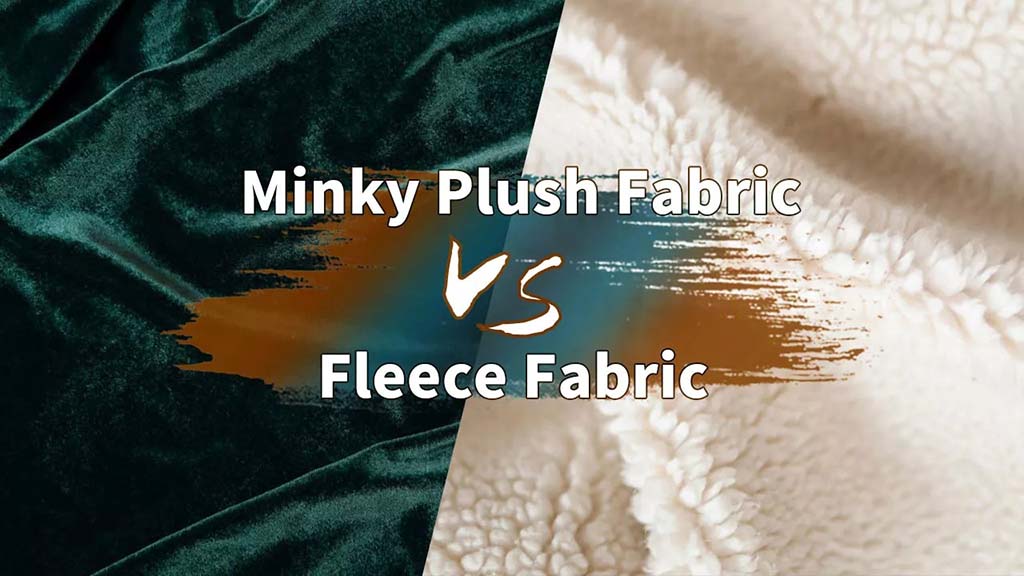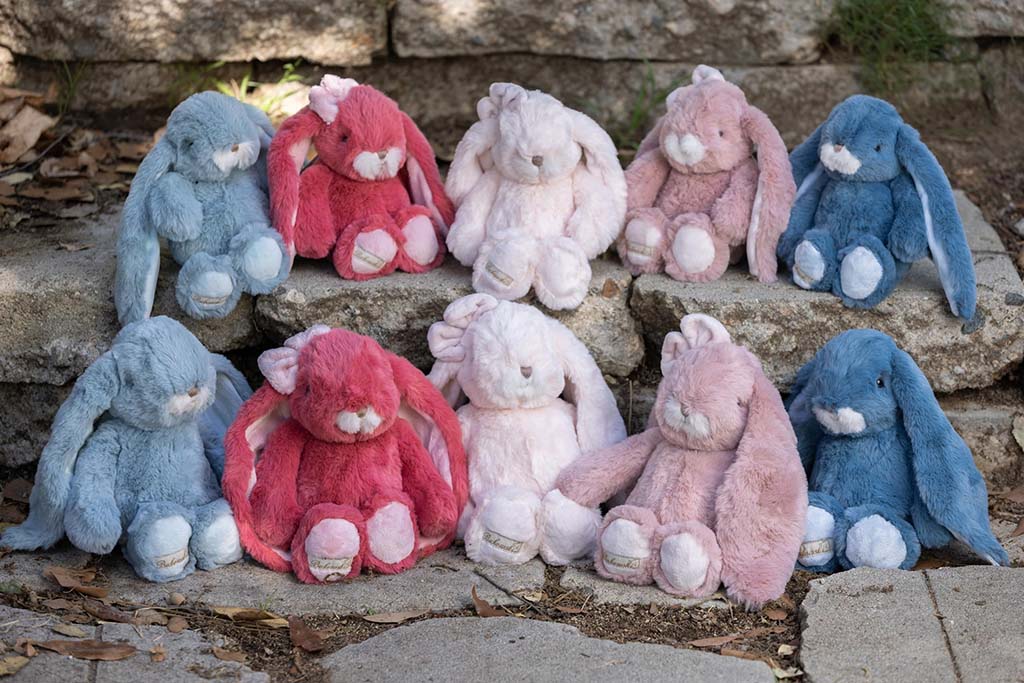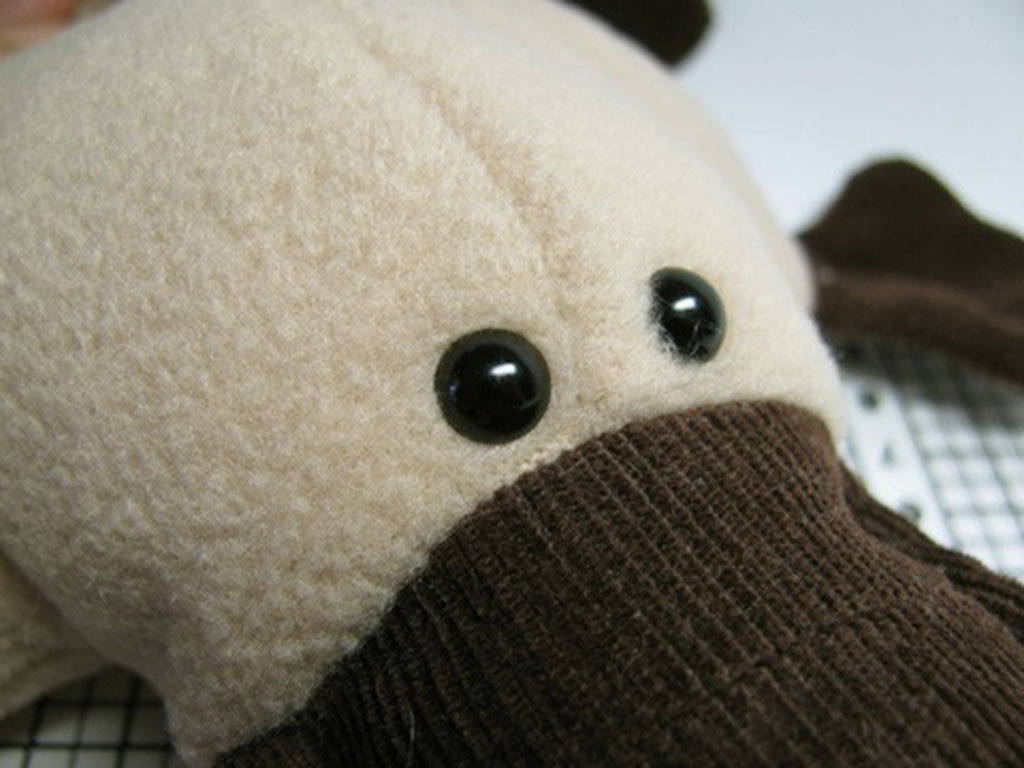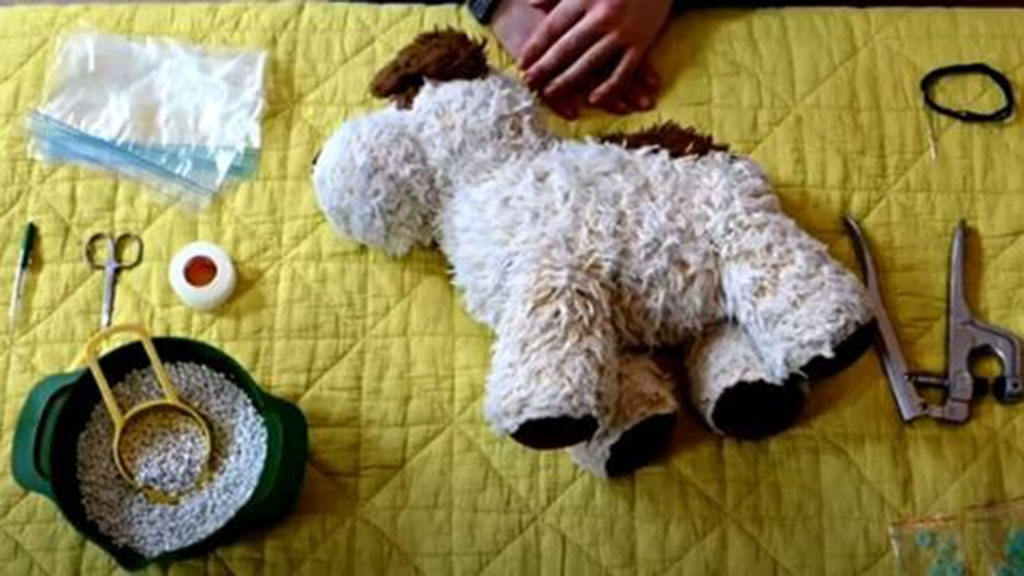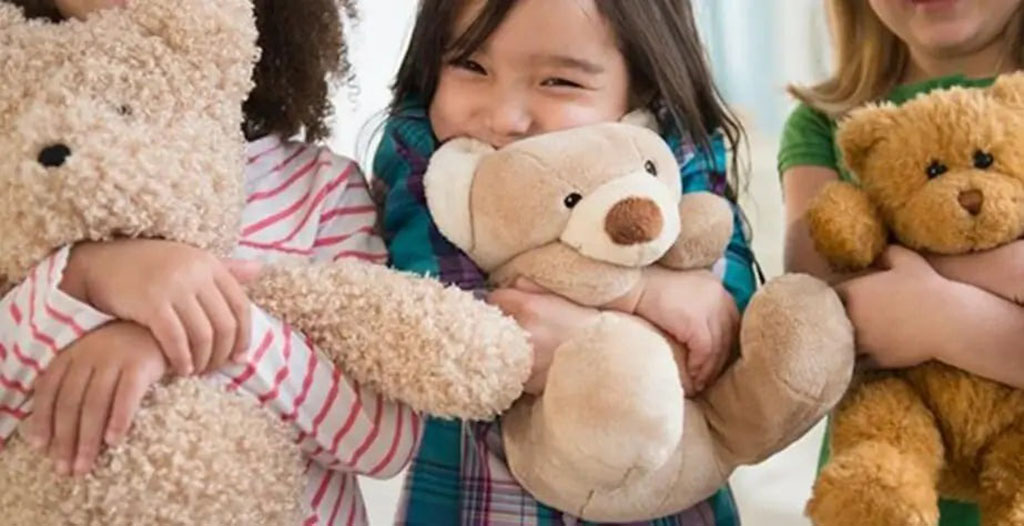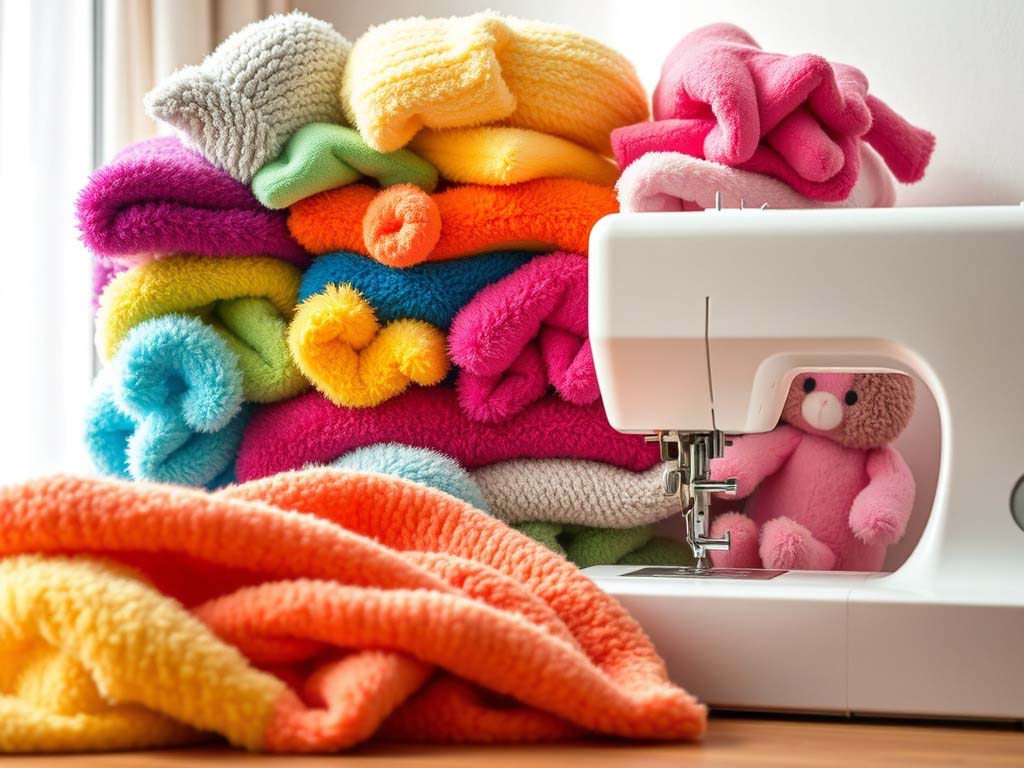I’m Amanda from Kinwin in China. We manufacture plush toys for B2B buyers worldwide. Many clients ask me: Should I choose fleece or minky for my next plush line? The right answer depends on feel, sewing efficiency, durability, safety, and your price/MOQ targets. Below I compare both fabrics with factory-level details—using clear, simple English so your team can act fast.
What fiber composition and knit/backing differences distinguish fleece vs. minky in plush manufacturing?

Fleece is usually polyester, brushed on both sides, with a knit or warp-knit base that traps air for warmth. It has a matte look, soft but slightly “dry” handfeel, and good body.
Minky (also called micro-mink, PV plush, or coral fleece in some catalogs) is typically 100% polyester with a dense, short-to-medium pile on one side and a smooth knit backing. It feels silky and plush, with a subtle sheen.
Key takeaway: minky gives premium softness and a luxe look; fleece gives stable body and cost efficiency.
Table 1 — Structure & Composition (1/5)
| Property | Fleece (polyester) | Minky (polyester, PV plush) | Impact on Plushies |
|---|---|---|---|
| Base | Knit/warp-knit, brushed both sides | Knit backing with one-sided pile | Minky looks richer; fleece feels thicker/loftier |
| Surface | Matte, micro-nap | Silky pile, sometimes embossed/dotted | Minky reads “premium” in photos |
| Handfeel | Soft, “dry” touch | Ultra-soft, slippery-smooth | Minky wins on cuddle factor |
| Stretch | Moderate 2-way (varies) | Often higher 2-way stretch | Minky needs tighter sewing control |
| Weight (gsm) | 180–300+ gsm | 180–320+ gsm | Similar ranges; weight alone doesn’t decide |
How do pile length, denier, and finishing (raising/shearing) influence softness and handfeel across both fabrics?

Pile length: Longer pile increases plushness but can look messy on small parts. Denier (fiber thickness) affects fineness; finer microfibers feel silkier. Finishing—raising, shearing, heat-setting—controls direction, shine, and uniformity.
- For baby SKUs, short/medium pile with fine denier feels soft and is safer to keep lint low.
- For mascot or photo-heavy characters, a slightly longer, well-sheared minky can hold highlights and look “expensive.”
Table 2 — Handfeel Drivers (2/5)
| Factor | Fleece Behavior | Minky Behavior | Practical Choice |
|---|---|---|---|
| Pile length | Short pile feels tidy; long adds warmth | Short/med pile feels silky; long looks luxe | Baby toys: short/med; display plush: med/long |
| Denier (fiber fineness) | Standard microfibers feel soft | Finer denier feels ultra-soft, less scratchy | Choose finer denier for infant touchpoints |
| Finishing (raising/shearing) | Brushing adds loft; light shear tidies | Shearing polishes surface; heat-set controls shine | Photo-ready premium: sheared minky |
| Visual effect | Matte, cozy | Subtle sheen, plush | Brand photo glam: minky; rustic/cozy: fleece |
Which material offers better cut-and-sew efficiency—grain stability, seam slippage resistance, and yield optimization?

Fleece usually wins on operator speed and pattern yield because it is less slippery and more forgiving on the machine. Minky demands tighter needle/thread control and careful feeding to avoid seam stretch and laddering on curves.
Production tips we use:
- Reduce presser-foot pressure for minky; use walking foot or Teflon foot if needed.
- Use sharp micro-tex needles; adjust stitch length to prevent tunneling.
- Pre-notch curves and use clips (not pins) to avoid holes in dense pile.
- Stabilize high-stretch areas with tricot tape at internal seams.
Table 3 — Cut-and-Sew Efficiency (3/5)
| Criterion | Fleece | Minky | Why it matters |
|---|---|---|---|
| Grain stability | Better | Moderate (more stretch) | Affects shape accuracy on small parts |
| Seam slippage | Low–moderate | Higher risk without tuning | Impacts durability, especially at tight curves |
| Operator speed | Faster (learning curve low) | Slower (needs technique) | Impacts labor cost/unit |
| Yield optimization | Easier nesting | More waste if nap direction strict | Affects material cost and MOQ planning |
| Pattern tolerance | Forgiving | Precise | Reduces remake rate in mass production |
How do shedding, pilling, and wash durability compare under EN/ASTM lifecycle tests?

Both fabrics are polyester, but shedding/pilling differ by pile density and finishing. Well-finished minky often pills less and keeps a smooth face longer. Fleece can show pilling sooner on high-friction points but may hide wear on camera due to matte texture. Wash durability depends on stitch security, seam type, and care label. For baby SKUs, we choose constructions that survive gentle cycle + air dry and quickly refluff by hand.
Common in-house checks we run:
- Pilling: Martindale or random tumble tests.
- Seam: grab/pull under wet and dry conditions.
- Colorfastness: saliva, perspiration, washing.
- Shedding/lint: tape-pull and surface-brush tests.
Table 4 — Durability & Care (4/5)
| Aspect | Fleece | Minky | Control Tips |
|---|---|---|---|
| Shedding | Moderate at edges if poorly cut | Low–moderate; better when sheared | Heat-seal edges where possible; vacuum post-cut |
| Pilling | More visible over time | Generally lower on premium grades | Specify anti-pilling grades for high-touch zones |
| Wash durability | Good if seams stable | Very good if stitch tuned | Use reinforced seams; test laundry bag method |
| Colorfastness | Good with proper dyeing | Good–very good | Run saliva/perspiration tests for baby SKUs |
| Handfeel after wash | Stays cozy, slightly drier | Stays silky; refluffs well | Add care card: cool wash, air dry, refluff |
What safety and chemical compliance factors (EN71-3, CPSIA, REACH, OEKO-TEX) differentiate fleece and minky for baby SKUs?

Compliance is not about the fabric name; it’s about the exact lot and finish. Both fleece and minky can pass EN 71-3, CPSIA, REACH, and OEKO-TEX if sourced and finished correctly. For under-3 toys, we also care about lint control, seam strength, and small-parts rules. We standardize embroidered faces, secure stitch types, and low-shedding piles for infant lines.
Table 5 — Safety & Compliance Matrix (5/5)
| Requirement | Fleece | Minky | Buyer Notes |
|---|---|---|---|
| EN 71-3 (elements) | Can pass with certified dyes/finishes | Can pass with certified dyes/finishes | Test per lot/colour; keep COAs |
| CPSIA (lead, phthalates) | Pass with compliant inputs | Pass with compliant inputs | Verify trims, inks, threads too |
| REACH | Manage SVHCs via approved suppliers | Manage SVHCs via approved suppliers | Ask for latest declarations |
| OEKO-TEX | Available grades exist | Available grades exist | Helpful marketing label |
| Infant lint/safety | May lint more if brushed rough | Lower lint on sheared minky | Choose low-lint grades for baby SKUs |
Which use cases, pricing, and MOQ scenarios make fleece or minky the better choice for OEM/ODM buyers?

Choose fleece when you need cost control, fast sewing, and rugged utility—mascots, giveaways, promo items, or designs with many small pieces.
Choose minky when you need premium handfeel, photo appeal, and giftability—baby animals, cuddle plush, and hero SKUs for retail displays.
Pricing and MOQ vary by gsm, finish, colour count, and printing/embossing needs. Minky often costs more per meter and can raise labor time, but it converts better for premium lines with strong photos. Fleece keeps unit cost low and throughput high for large programs.
Practical selection checklist (from our factory playbook)
- Target buyer: Baby premium → minky (short/med pile, sheared); Budget promo → fleece.
- Design complexity: Many tiny pieces/curves → fleece; simple rounded shapes → minky ok.
- Photo strategy: High visual impact → minky sheen; cozy/rustic → fleece matte.
- Durability zone: High friction areas → specify anti-pilling grade, reinforced seams.
- Compliance: Under-3 lines → low-lint pile, embroidered faces, documented tests (EN 71-3 / CPSIA).
- Throughput: Need speed and yield → fleece; ready to trade speed for touch → minky.
How I can help
I’m Amanda from Kinwin. We produce both fleece and minky plush at scale with OEM/ODM support, CE/ASTM experience, and exports to the USA, Europe, Japan, South Korea, and the Middle East. Tell me your age grade, target handfeel, price band, and order window. I’ll propose fabric specs (gsm, denier, pile, finish), sewing settings, and a quick test plan so your listing wins on both feel and reliability.
Conclusion
Fleece maximizes speed, yield, and budget; minky maximizes softness, photos, and premium appeal. Match the fabric to your buyer, design, and compliance plan—and you’ll get higher reviews with fewer returns.


